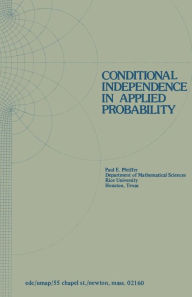It would be difficult to overestimate the importance of shastic independence in both the theoretical development and the practical applications of mathematical probability. The concept is grounded in the idea that one event does not "condition" another, in the sense that occurrence of one does not affect the likelihood of the occurrence of the other. This leads to a formulation of the independence condition in terms of a simple "product rule," which is amazingly successful in capturing the essential ideas of independence. However, there are many patterns of "conditioning" encountered in practice which give rise to quasi independence conditions. Explicit and precise incorporation of these into the theory is needed in order to make the most effective use of probability as a model for behavioral and physical systems. We examine two concepts of conditional independence. The first concept is quite simple, utilizing very elementary aspects of probability theory. Only algebraic operations are required to obtain quite important and useful new results, and to clear up many ambiguities and obscurities in the literature.





